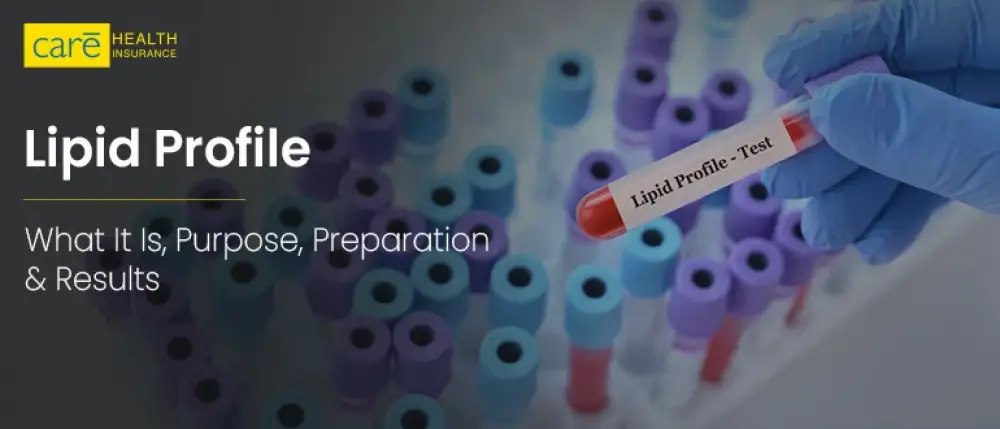Subscribe to get weekly insights
Always stay up to date with our newest articles sent direct to your inbox
Published on 20 Nov, 2024
Updated on 27 Mar, 2025
808 Views
4 min Read

Written by Nidhi Goyal
favorite0Like
favoriteBe the First to Like
Imagine trying to drive a car with an empty fuel tank. Instead of filling it up with fuel; you find fault in its engine.
Many of us also make such mistakes with our bodies too. Lack of proper information is the reason.
We all know that our body needs nutrients and vitamins to function properly, and we focus on a good and balanced diet. And for a healthy heart, having a cholesterol-free diet is the buzz. But here’s the catch.
Cholesterol has been highly criticised, but it's essential for our existence. Just like the right amount of water keeps us healthy and hydrated, similarly, an optimal level of cholesterol is vital to human life. However, just as an excessive flood of water is harmful, immoderate cholesterol levels are detrimental to health.
Cholesterol is a type of lipid (fat) found in all the body’s cells. We need cholesterol to produce bile in the liver, vitamin D, hormones, and tissues. However, cholesterol levels can increase the risk of cardiovascular diseases.
How do you measure your cholesterol count? A Lipid profile test measures different types of lipids , such as cholesterol and triglycerides, in the blood.
It is a standard blood test that monitors and screens different cholesterol and triglyceride levels. Balancing the levels of both these fats is important because excess fat can build up in your arteries and blood vessels, hence, damaging them.
Healthcare providers use lipid profile diagnosis to evaluate the risk of cardiovascular diseases for children and adults. This test is performed when the patient has been fasting for 9 to 12 hours. In many cases, performing the blood test is possible without fasting, but it is better to have your doctor’s advice. A lab technician draws a certain amount of blood sample from your arm vein through a syringe, and then analyses the sample in the laboratory, and delivers the report within 1-2 days.
The blood test measures five different cholesterol and triglycerides. The lipid profile test diagnoses diabetes, kidney diseases, obesity, high cholesterol, and polycystic ovary disease. Doctors generally recommend it to monitor cholesterol levels in the blood to diagnose health issues. Lipid profile test details include the following parameters-
If the lipid profile is high, it may indicate the risk of type 2 diabetes, peripheral artery disease, and coronary artery disease, which may lead to heart attack, cardiovascular disease or stroke.
The repercussions of ignoring your health lead to illness, followed by substantial unplanned healthcare expenses. Medical inflation, hikes in costs for doctor’s consultations, diagnosis tests and more may put a considerable strain on your finances. But you can beat the burden by buying health insurance. You pay a relatively affordable premium each year and achieve financial security.
Care Supreme by Care Health Insurance is health insurance for families and individuals. The plan covers annual health check-ups which helps you avoid unnecessary costs annually. If you have a good health insurance plan, then you are entitled to use such services without spending any money.
High lipids or high cholesterol symptoms may show signs that may lead you to get it done. Some of them are given below-
>>Read More: Cholesterol and Obesity: Are they the Same?
A cholesterol test helps you measure cholesterol and fat levels to assess your risk of heart and other diseases. According to the fast-paced life, experts suggest healthy adults to get their lipid profile test done at least once every 5 years. Moreover, individuals with pre-existing diseases should get it tested more often.
Disclaimer:The above information is collected from generic sources, thus,doesn’t substitute for a qualified medical opinion. Also, all plan features, benefits, coverage, and claims underwriting are subject to policy terms and conditions.Refer to the brochure, sales prospectus, and policy documents carefully.
favoriteBe the First to Like
शुगर कंट्रोल कैसे करे? जानें, डायबिटीज में क्या खाना चाहिए Vipul Tiwary in Health & Wellness
Thyroid : मामूली नहीं हैं महिलाओं में थायराइड होना, जानें इसके लक्षण और घरेलू उपचार Vipul Tiwary in Diseases
हाई ब्लड प्रेशर को तुरंत कंट्रोल कैसे करें? देखें इसके उपाय Vipul Tiwary in Diseases
प्लेटलेट्स की कमी के लक्षण, कारण और इलाज क्या है Vipul Tiwary in Diseases
The interconnection between Hashimoto's & Diabetes- Is There Any Hidden Bond? Bhawika Khushlani in Diseases
10 Ways To Boost Your Baby's Immune System Naturally! Sejal Singhania in Family
विश्व जनसंख्या दिवस कब और क्यों मनाया जाता है? Vipul Tiwary in Awareness Days
Teeth Anatomy: Secrets Behind Your Pretty Smile Bhawika Khushlani in Diseases